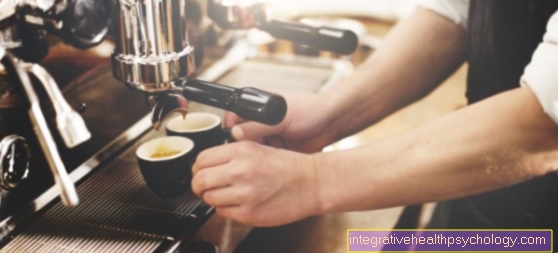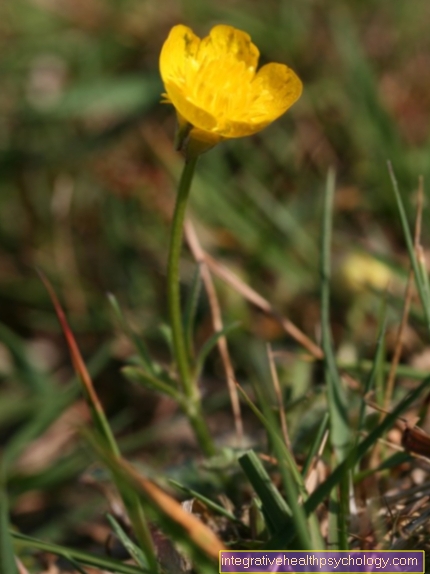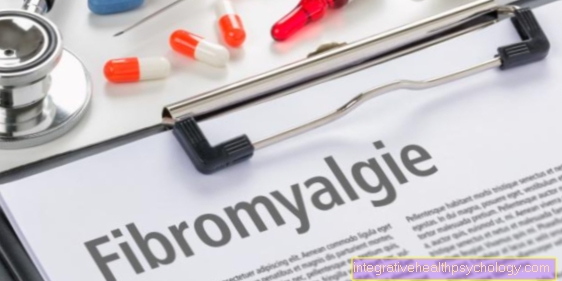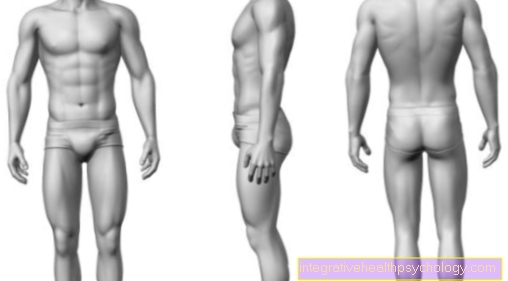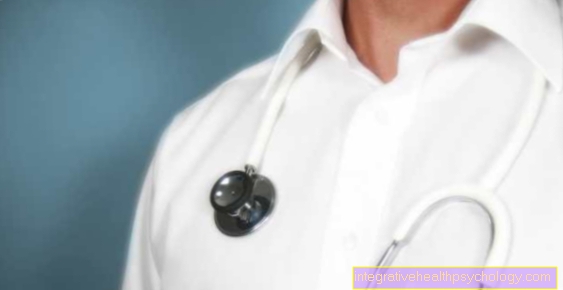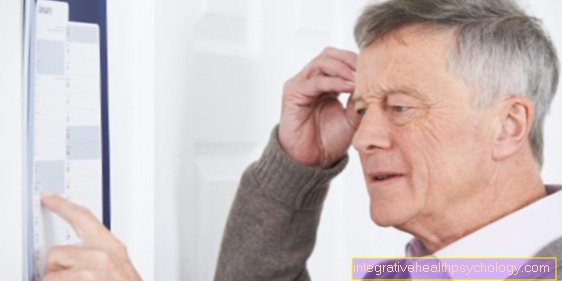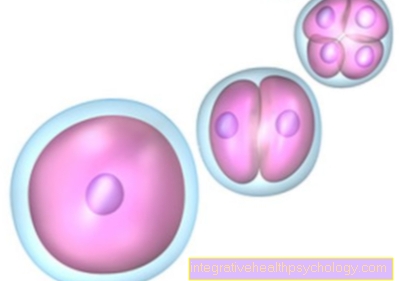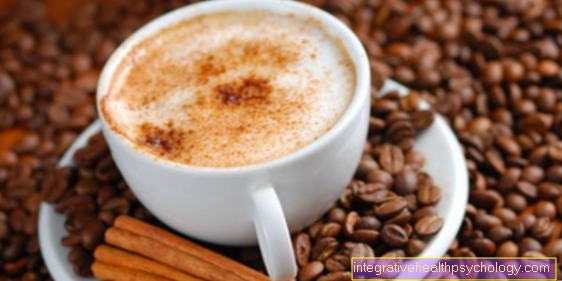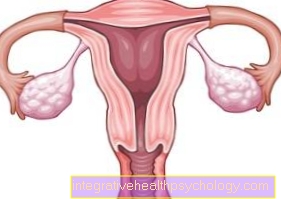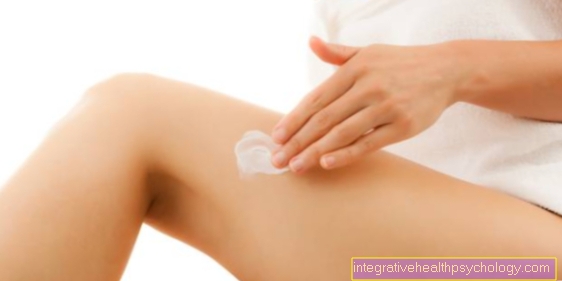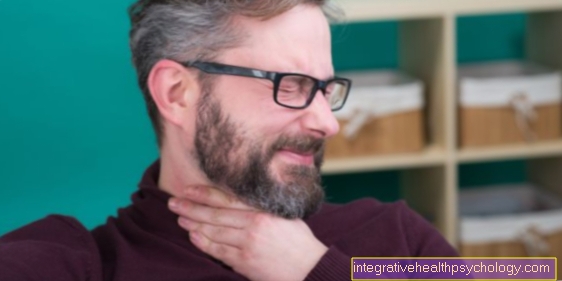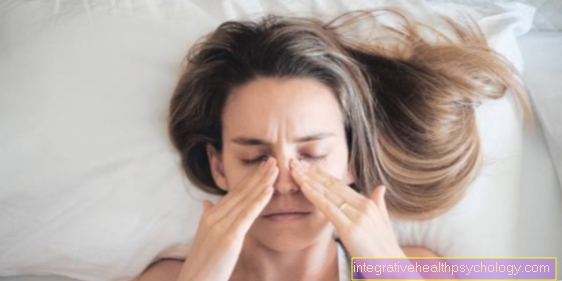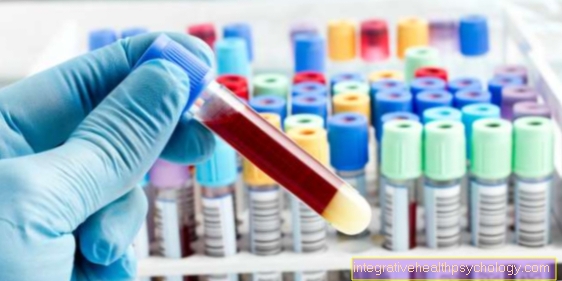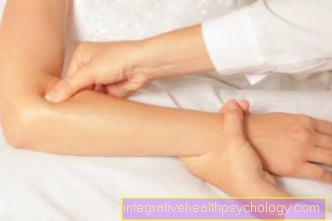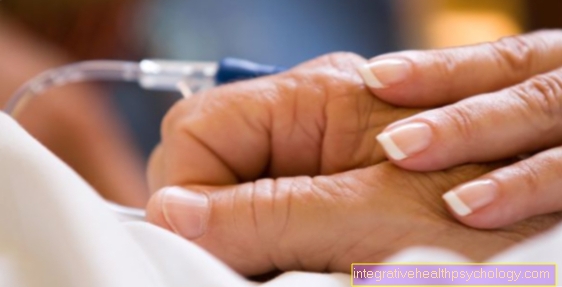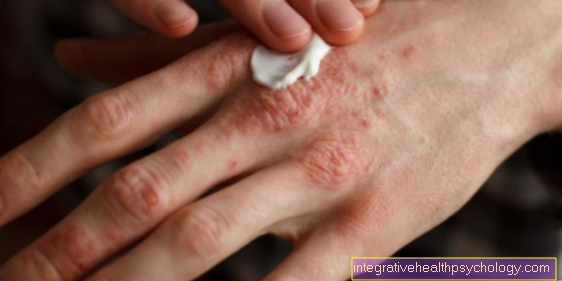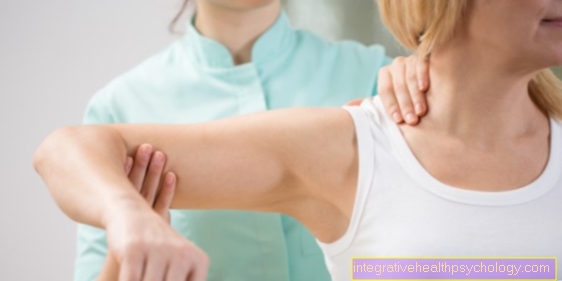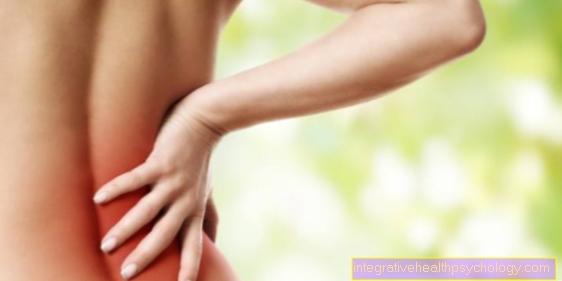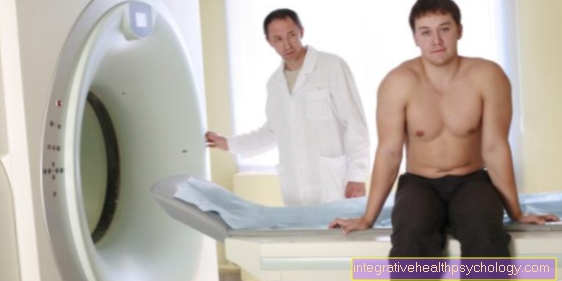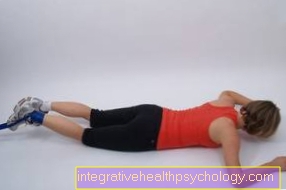Jaw muscles
definition
The jaw muscles describe the masticatory muscles and consist of four paired muscles. They start at the lower jaw (= mandible) and have the task of moving the movable lower jaw to the fixed upper jaw (= maxilla). So you are responsible for the jaw closure and play a key role in the act of chewing. They make it possible to bite and chop food.

Anatomy of the jaw muscles
The masticatory muscles consist of four pairs of muscles with the following functions:
- Masseter muscle: jaw closure
- Temporalis muscle: jaw closure and retraction of the lower jaw
- Musculus pterygoideus medialis: inner muscle that closes the jaw
- Musculus pterygoideus lateralis: jaw opener, pulling the lower jaw forward, grinding movements
All four muscles of mastication are supplied by the mandibular nerve, a branch of the cranial nerve trigeminal nerve.
The masseter muscle can be divided into a superficial part (pars superficialis) and a deeper part (pars profunda). Both parts have their origin on the zygomatic arch and pull down to their insertion at the angle of the jaw (= angulus mandibulae).
The temporal muscle has its origin in the temple, more precisely in the temporal fossa and the temporal fascia, and extends down to a protrusion on the outside of the lower jaw (= coronoid process).
The medial pterygoid muscle has its origin in the pterygoid fossa of the sphenoid bone and runs on the inside of the lower jaw to its insertion at the pterygoid tuberosity.
The fourth mastication muscle, the lateral pterygoid muscle, consists of two heads that attach to different parts of the sphenoid bone and pull together to the joint head of the lower jaw. Parts even pull up to the joint disc.
Function of the jaw muscles
The main task of the strongest muscle, the masseter muscle, is to close the jaw. He provides more than half of the chewing performance and chewing power. Together with the M. pterygoideus medialis, the M. Masseter forms a muscle loop around the lower jaw. The movements during chewing irritate the adjacent large salivary gland, the parotid gland, and stimulate the secretion of saliva.
In addition to closing the jaw, the temporalis muscle ensures that the lower jaw is retracted (= retrusion) during chewing and grinding movements.
The medial pterygoid muscle also helps to close the jaw and ensures a grinding movement when it is contracted on one side.
The lateral pterygoid muscle is the only muscle that initiates the opening of the jaw. The lower head of the muscle shifts the joint disc forwards when the muscles are pulled on both sides and thus achieves a so-called protrusion (= advancement) of the lower jaw. With unilateral muscle pull (= muscle contraction), the lower jaw is shifted to the opposite side and thus supports the grinding movements.
Disorders of the jaw muscles
The masticatory muscles are viewed as a functional unit. Ailments or diseases of these can radiate through their approach into the entire head and neck area. The most common disease is what is known as cranio-mandibular dysfunction (CMD). It describes a dysregulation of the temporomandibular joint and is related to the muscles.
In many cases, these complaints are caused by stress-related teeth grinding or clenching at night. This causes the jaw muscles to tense up and harden. The result is a misalignment of the temporomandibular joint, which in turn exacerbates the symptoms.
Read more on the subject: Cranio-Mandibular Dysfunction
How can I relax the jaw muscles?
Relaxing the jaw muscles is important to relieve tension and avoid further consequential damage that can result from tense jaw muscles. The muscles are easy to perform with your own exercises at home or at work. Short massage units or a so-called acupressure are best for this. This describes a combination of massage and pressure therapy. As soon as the muscles are massaged, they are better supplied with blood and consequently loosen up. Furthermore, the whole body should be able to relax in between. This can also have a positive effect on the relaxation of the jaw muscles. For cranio-mandibular dysfunction, the dentist may prescribe physical therapy to relieve the symptoms.
Pain in the jaw muscles
Masticatory muscle pain is very common. As a rule, the masseter and temporalis muscles are severely affected. The pain often radiates to the temple area due to the anatomy of the jaw.
The cause of pain in the jaw muscles is usually a stress-related grinding or clenching of teeth and occurs primarily at night. The first signs are ground canine tips. The grinding of teeth exerts strong forces on the teeth and consequently on the jaws. The muscles tense and harden and pain in the jaw, head and neck area occurs. The pain in the jaw can even radiate to the neck or back area. Furthermore, jaw misalignments can occur, which can increase the pain in the jaw muscles.
Another possible cause of pain in the jaw muscles could be infection or inflammation in the muscles themselves or in surrounding tissues.
If the symptoms do not go away on their own after a few days, a doctor should be consulted to clarify the cause.
Find out more belowr: pain in the temporomandibular joint
How do you massage the jaw muscles?
Correct and targeted self-massage can help to relax the muscles. The massage stimulates blood flow to the muscles. Muscles with good blood circulation can relax more quickly and the pain subsides.
There are many different types of massage that can help loosen up the muscles. Most of the exercises are very useful at home or at work.
One possibility is to pinch the cheek between the thumb and forefinger below the zygomatic arch just before the ear. Briefly pressure is exerted by circular movements with the thumb. The index finger itself does not exert any pressure. It only represents the counterforce. After a few seconds, the cheek can be relaxed again. This exercise can be repeated a few times.
Furthermore, you can put the thumb inside the cheek and place the index finger against it from the outside. Now the two fingers can be pulled from the bottom up towards the cheekbone. The placement of the fingers can be varied and the whole muscle can be massaged. You can walk from the outside inwards to the corner of your mouth.
Depending on the degree of tension, the massage can be painful in places. But don't let that put you off. It is precisely these points that have to be released from their tension. Pain relief then occurs after treatment. There are many different methods of massaging the jaw muscles. For this you should get advice and tips from the attending physician.
How can you build up the masticatory muscles?
The jaw muscles are very important muscles for everyday life. There are several exercises to strengthen these muscles that are easy to do during everyday life. One exercise is to pull your lower jaw back as far as possible. The teeth do not touch and the tongue is rolled backwards. This position should be held for approx. 20 seconds and then released again. This exercise can be repeated a few times with some relaxation exercises in between. Furthermore, carefully opening the mouth wide can help strengthen the muscles.
Jaw muscle swollen - what's behind it?
If there is swelling of the jaw muscles, this is in most cases caused by inflammation. It is often difficult to pinpoint exactly where the inflammation is located. The pain is often described as dull or sore muscles and radiates to surrounding areas. They often increase when the mouth is opened.
If there is inflammation, an antibiotic must be given to control it, as inflammation tends to spread quickly. Swelling can also be caused by wisdom teeth, which may need to be pulled.
Heat should be avoided. In contrast, cooling the affected area can prevent further swelling. In general, it is important to consult a doctor immediately in the event of swelling in the facial area to clarify the cause.

